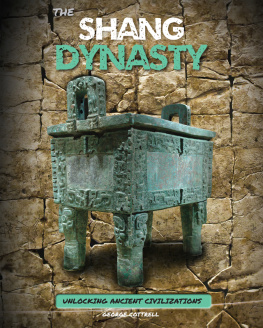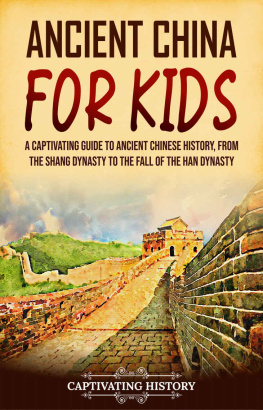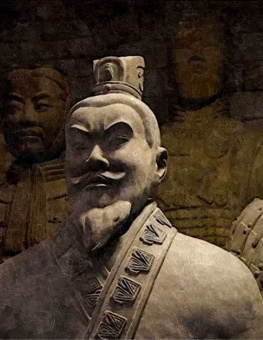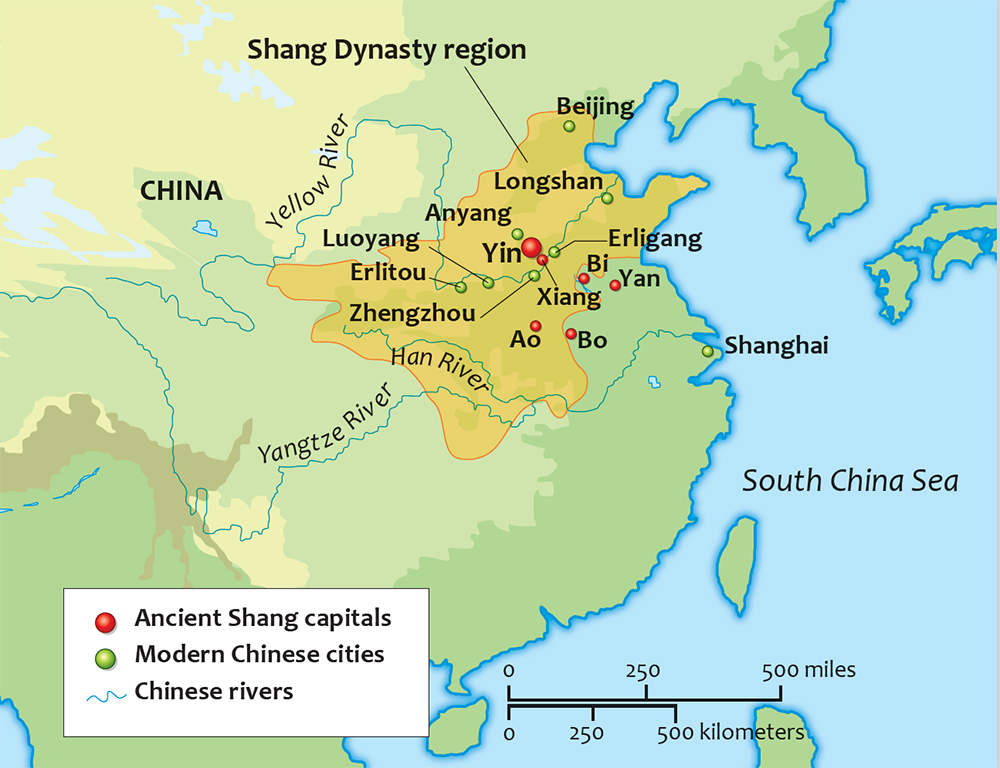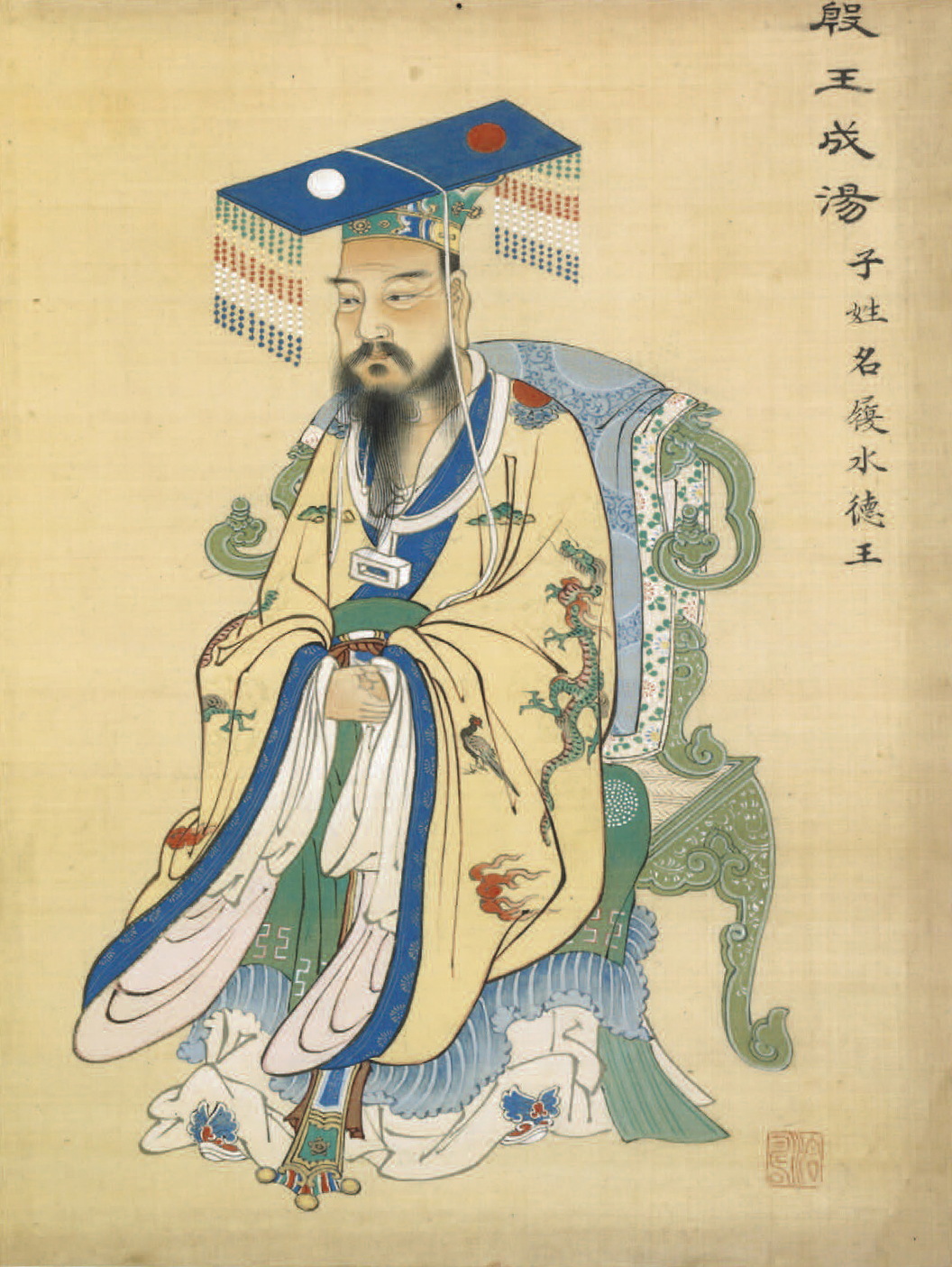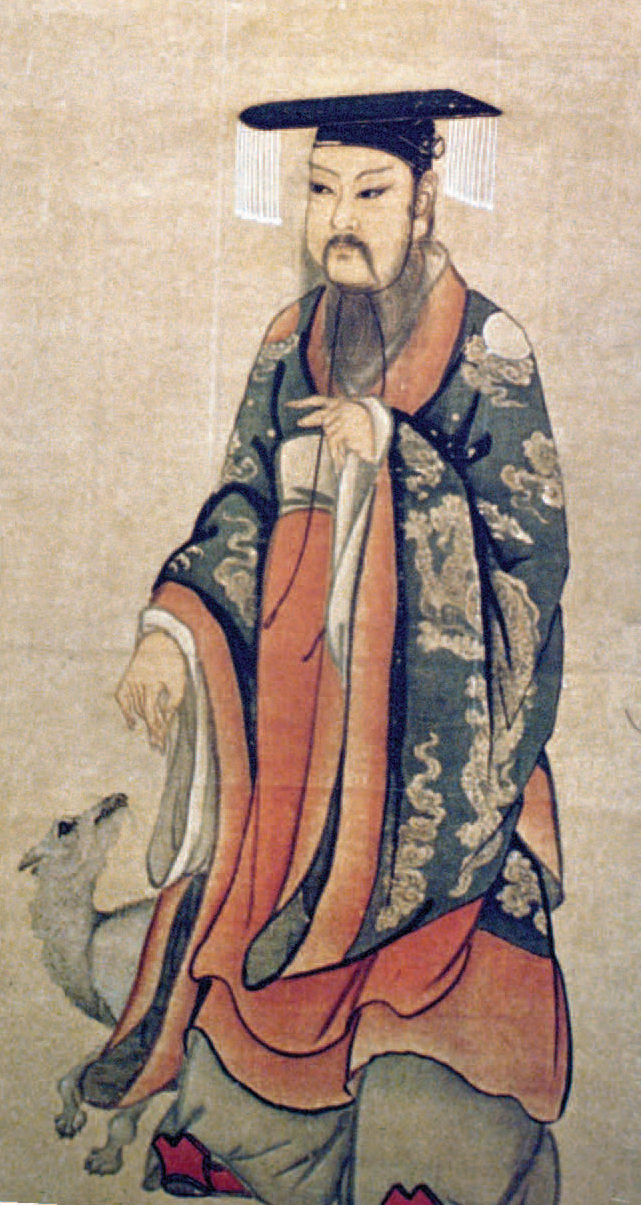TIMELINE
- 3000 BCE Silk-making begins in China
- 2800 BCE Solar eclipses recorded by Chinese astronomers
- 2697-2597 BCE The possibly mythical Yellow Emperor Huang Di rules
- 2000-400 BCE Chinas Bronze Age
- 1700 BCE The Battle of Mingtiao, in which the Tzu tribe overthrows the Xia dynastyto establish the Shang dynasty, is fought
- 1500 BCE The Chinese correctly calculate the number of days it takes for Earth torotate around the Sun
- 1250 BCE Chariot accident involving Emperor Wu Dings son
- 1200 BCE Approximate year of Lady Haos death
- 1100 BCE Chinese begin cultivating soybeans as a crop
- 1050 BCE Shang astronomers first predict eclipses
- 1043 BCE The Battle of Muye, where the Zhou attack the Shang capital and win, leadsto the end of the Shang dynasty
- 300 BCE Anesthesia (medicine for putting people to sleep for surgery) is reportedlyfirst used in China
- 300 BCE The first major Chinese medical text is written
- 221 BCE The Qin dynasty begins, which puts an official end to the practice of accompanyingin death
- 1899 CE A Chinese antiques dealer discovers writing on oracle bones and gives themto an expert to examine
- 1912 The emperor of Chinas final dynasty leaves the throne
- 1936 Archaeologists find a huge burial pit near Anyang containing two entire ancientchariots, along with the skeletons of four horses and three humans with weapons
- 1976 Lady Haos tomb is discovered near the modern city of Anyang. It is one of thebest-preserved tombs found from Shang dynasty China, with most of its contents stillintact.
GLOSSARY
method of stopping pain or curing illness by placing needles into a persons skin at particular points on the bodyperson who tries to transform base metals into gold or discover a processfor extending human lifeperson who studies the bones, tools, and other objects of ancient peopleto learn about past human life and activitiesperson who studies how the positions of the stars and movements of theplanets influence the lives and behavior of peopleperson who studies the universe and objects in spacebuilding or group of buildings used to house soldiersin society, divisions into which people are grouped based on their wealth,social, and cultural status. Rich people are usually at the top, with poor peoplecloser to the bottom.sea shell with a smooth, glossy dome and a long, narrow openingperson who uses special powers to predict future eventssupreme ruler of an empire or territorywild animals, birds, or fish hunted for food or sporttough fiber of the cannabis plant, used for making coarse fabricsport or skill that began as a form of self-defense or attackseasonal, strong winds that create heavy rainstorms in parts of Asiapreserve a body by embalming it and wrapping it in cloth bandagespoor farmer who has a small piece of land for farming, or any uneducated person of low social statuskilling of an animal or person as a religious offering to a godbehavior showing high moral standardstwigs that are easily bent to make furniture or figurines
FIND OUT MORE
BOOKS
- Allan. Tony. Ancient China (Cultural Atlas for Young People). New York: Chelsea House,2007.
- Anderson, Dale. Ancient China (History in Art). Chicago: Raintree, 2005.
- Hollihan-Elliot, Sheila. The Ancient History of China (China: The Emerging Superpower).Philadelphia: Mason Crest, 2013.
PLACES TO VISIT
If youre fortunate enough to visit China, travel back in time at the Yinxu Museumcomplex, near Anyang. It features 600 artifacts from the Shang dynasty, includingbronze vessels, jade pieces, oracle bone cellars, chariot pits, a gallery of oraclebones, and Fu Haos tomb: www.chinahighlights.com/anyang/attraction/yinxu.htm
You can also learn more about Chinese culture and art at the following museums inthe United States:
Freer and Sackler Galleries
1050 Independence Avenue, SW
Washington, D.C. 20013
www.asia.si.edu
The Metropolitan Museum of Art
1000 Fifth Avenue (at 82nd Street)
New York, New York 10028
www.metmuseum.org
WHAT WAS THE SHANG DYNASTY?
In northern China, the modern city of Anyang is sandwiched between one of the worldslargest rivers and a group of towering mountains. Over 3,500 years ago, this landwas dotted with marketplaces selling gorgeous silk clothes and shiny bronze dishes,farms with crops and animals, and grand palaces protected by thick, tall walls. Behindthose walls lived the ruling . But these men ruled differently from mostleaders today.
The Shang dynasty was located in the northeastern region of what is now modern China.
The end of the Xia
Before the Shang dynasty, the Xia ruled the region. Early Chinese historians say that the last Xia king was a dishonest tyrant and his people were unhappy. For many years, another tribe fought to overthrow the unpopular king. Usually the king and his family fought wars, but a tribal leader named Cheng Tang gave weapons to the Together, they defeated the Xia in the Battle of Mingtiao and established the Shang dynasty.
WELCOME TO SHANG DYNASTY CHINA
Many countries today choose their rulers by voting. But in ancient China,large groups of relatives called clans or tribes fought with other tribes forpower. The family that won got to rule the region. When a ruler died, thefamily passed the power on to another family member. This family wouldrule until they were overthrown by another tribe.
This system of governing is called a dynasty. The first dynasty we haverecords for is the Shang, which began around 1600 BCE . The Shangdynasty occupied a large area in northern China, on both sides of theYellow River. It was led by over 30 different emperors, operating outof several different capital cities, and lasted over 600 years, until about1040 BCE .
HOW DID THE EMPEROR AFFECT DAILY LIFE?
Since Chinese emperors won their power through battles or birthright rather thanelections, they had to convince their subjects they had a right to rule. They didthis by claiming that it was the will of the gods. An emperor would have to provehe was supposed to be in charge by governing well and wiselyif things went wrong,it might mean he was not pleasing the gods and should no longer be in charge.
The first emperor, Cheng Tang
In a book called The Biographies of Emperors, the founder of the Shang dynasty, ChengTang, is described as 9 feet [2.7 meters) in height, with the of a saint.This description must be exaggerated, but most historians agree that Cheng Tang wasan honest and fair ruler who genuinely cared about both people and animals.






